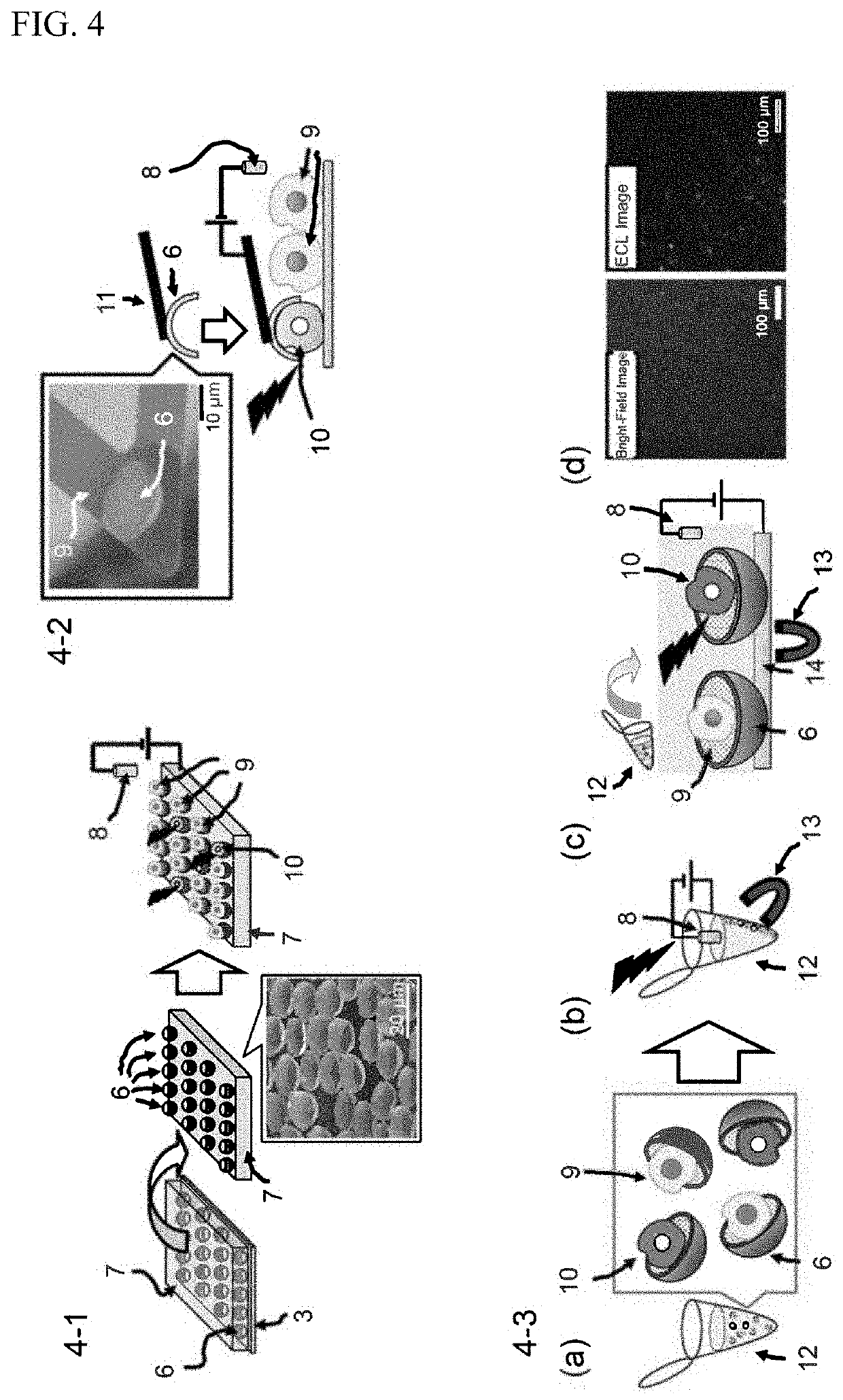Microstructure, method for manufacturing same, and molecule detection method using same
a microstructure and molecule technology, applied in the field of microstructure, can solve the problems of incompatibility with large micron-order objects, no indication of the specific application of fabricated microparticles in the field of life science, and no method has been shown for applications other than cell collection, so as to increase the sensitivity of signal detection, suppress background light noise, and high-sensitivity measurements
- Summary
- Abstract
- Description
- Claims
- Application Information
AI Technical Summary
Benefits of technology
Problems solved by technology
Method used
Image
Examples
Embodiment Construction
1. Microstructures for Use in the Detection of Molecules
[0041]In one aspect, the present invention provides microstructures for use in the detection of molecules (sometimes referred to herein as “microstructures of the present invention” or “electrode microstructures,”“hemispherical shell-shaped microstructures,” etc.). In one typical embodiment, the first conductive material includes a magnetic material, and the second conductive material includes an electrode material.
[0042]Examples of the first conductive material include, but are not limited to, magnetic materials such as metals such as nickel, iron, and cobalt, oxides such as iron oxide and chromium oxide, or alloys such as ferrite and neodymium.
[0043]With respect to the present invention, when referring to “magnetic material,” the term “magnetic material” is used in its ordinary meaning as used in the art. For the purpose of the present invention, at least the “magnetic material” used in the present invention should be magneti...
PUM
| Property | Measurement | Unit |
|---|---|---|
| diameter | aaaaa | aaaaa |
| diameter | aaaaa | aaaaa |
| thickness | aaaaa | aaaaa |
Abstract
Description
Claims
Application Information
 Login to View More
Login to View More - R&D
- Intellectual Property
- Life Sciences
- Materials
- Tech Scout
- Unparalleled Data Quality
- Higher Quality Content
- 60% Fewer Hallucinations
Browse by: Latest US Patents, China's latest patents, Technical Efficacy Thesaurus, Application Domain, Technology Topic, Popular Technical Reports.
© 2025 PatSnap. All rights reserved.Legal|Privacy policy|Modern Slavery Act Transparency Statement|Sitemap|About US| Contact US: help@patsnap.com



